Back tightness and discomfort should make daily activities difficult to carry out. There are several potential causes, including trauma and arthritis, of lower back pain.
Though it is painful to have a tight lower back, the discomfort can be handled. Treatment could include a combination of medicine and exercises.
People can also take other steps to help avoid the stiffer lower back.
Causes
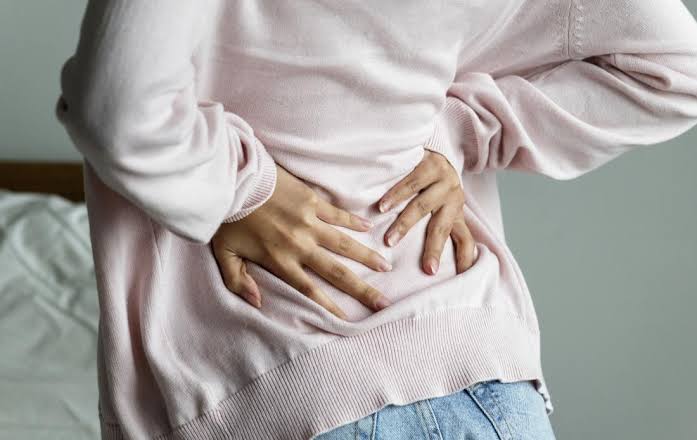
The back is composed of a complex structure of bones, joints, muscles, and other tissues. An person can injure any of these parts of the body, which can cause pain and tightness in the lower back.
Often damage from a car accident, fall or sports injury causes pain and tightness in the lower back. In other situations, injuries may occur while a person performs a normal operation or a regular job.
Some other common causes of lower back tightness include:
- Herniated or ruptured discs: This is a flattening and bulging out or rupturing of the discs that sit between the vertebrae.
- Radiculopathy: This is inflammation, compression, or injury that affects a spinal nerve root.
- Sprains and strains: Sprains are the result of tearing or overstretching ligaments, whereas strains are tears in the muscles or tendons.
- Skeletal abnormalities: These include conditions such as scoliosis, lordosis, and other spinal abnormalities.
- Sciatica: This is a form of radiculopathy that involves compression of the sciatic nerve running down the back.
- Spinal stenosis: This is narrowing of the spinal column, which puts pressure on the nerves and spinal cord.
- Spondylolisthesis: This occurs when the vertebrae of the lower back come out of place and pinch nearby nerves.
- Poor posture: Spending extended periods in positions of poor posture can cause tightness and pain in the lower back.
- Arthritis: This is an inflammatory condition that affects joints throughout the body, including the back.
In less common cases, an underlying condition may cause tightness and pain in the lower back. Some potential causes include:
- tumors
- infections, such as discitis
- cauda equina syndrome, which is a rare, serious complication of a ruptured disc
- kidney stones, which form when crystals build up in the kidneys
- abdominal aortic aneurysm, which is a localized, abnormal enlargement of the main blood vessel passing through the abdominal cavity
Exercises and stretches
With stretching and other exercises that target the lower back, lower back tightness and pain will improve.
Before starting a new workout or stretching out routine, it is best to talk to a doctor. They can provide advice on how to avoid any movements that cause discomfort or add excessive back pressure.
Some examples of exercises which may encourage tightness include:
Lumbar rotation
According to the National Institute on Aging, this lower back exercise involves the following steps:
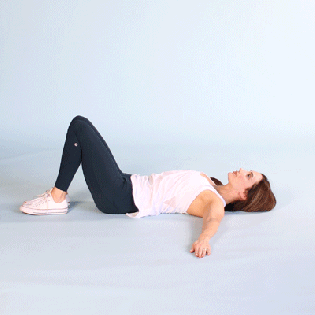
- Lie flat on the back.
- Stretch both arms out to the side, bend the knees, and keep the feet flat on the ground.
- With the shoulders, arms, and feet remaining on the floor, lower the knees toward the ground on the left, as far as possible without causing any discomfort.
- Hold the position for 20–30 seconds before moving the knees back to the center.
- Repeat on the opposite side.
- Do this 3–5 times on each side.
Cat and camel
According to the University Health Services at Berkley, CA, cat and camel stretches can reduce tightness and pain in the lower back. To perform the cat and camel:
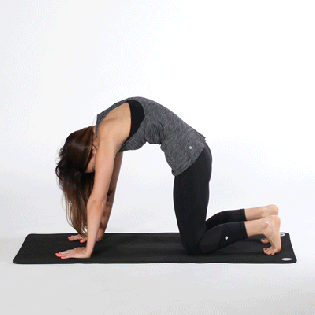
- Start on the hands and knees.
- In one smooth, controlled motion, arch the back upward.
- Hold the position for few seconds and then slowly lower the back into an inverted position.
- Repeat this 10–15 times.
Single knee to chest
The single-knee-to-chest stretch can help stretch the lower back and legs:
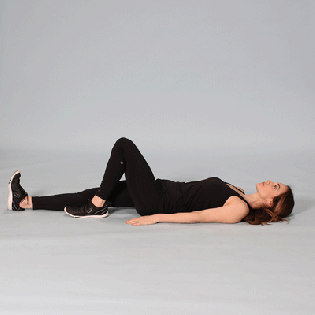
- Lie on the back, with the knees bent and the feet flat on the ground.
- Pull one leg in toward the chest until there is a comfortable stretch of the back and hip.
- Hold the position for 15 seconds.
- Repeat on the other side.
- Do this 5–10 times with each leg.
Bridge pose
The bridge pose is common in yoga, and it can also help with lower back pain. To perform the bridge:
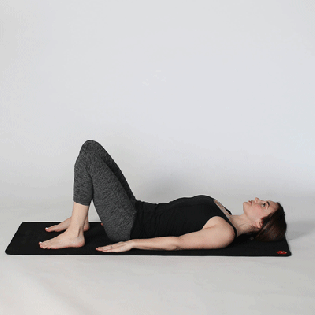
- Lie down on the back and bend the knees, placing the feet flat on the ground.
- Straighten the arms alongside the body with the palms facing upward.
- While keeping the shoulders, feet, and arms on the ground, raise the hips toward the ceiling.
- Hold for 4–5 seconds and then slowly lower the hips back to the mat.
- Repeat this 5–10 times.
Other treatment options
There are also several other treatment options. The standard treatment for first-line pain includes over- the-counter medicines and other treatments. There are some options which include:
- using analgesic medications, such as acetaminophen and aspirin
- taking nonsteroidal anti-inflammatory drugs, such as ibuprofen
- placing hot or cold packs on the lower back
A doctor may recommend supplementary therapies in more severe cases. Those might include:
- nerve block therapies, which cut off certain nerves in the lower back to help alleviate pain
- epidural steroid injections to provide immediate but short-term relief from pain due to conditions such as sciatica
- counterirritants, which are ointments and creams that help stimulate the nerves
If the problem persists an operation may be advised by a doctor. They are more likely to offer this treatment to people suffering from back injuries who may need repairing.
Prevention
Back pain and tightness are common problems but risk reduction can still be accomplished by:
- warming up and stretching before taking part in any sports or other physical activities
- avoiding smoking, which can affect blood flow and increase the risk of injury
- sleeping on a mattress that supports the spine
- exercising regularly
- wearing supportive and comfortable shoes
- lifting heavy objects with the knees and avoiding twisting the lower back
- eating a balanced diet
- reaching or maintaining a moderate weight
- avoiding long periods of inactivity
- maintaining good posture
- using lumbar supports
When to see a doctor
Many problems with the lower back are treated without medical attention. If the pain persists for weeks though, a doctor’s visit is worth it.
If a person has suffered back injury they should see a doctor immediately. To check for damage to the joints, muscles, or ligaments, the doctor may use X-rays and other diagnostic tests.
Summary
Lower back pain and tightness are common complaints and many potential causes range from trauma to bad posture.
A lot of exercises and stretches will help with the pain. Taking medications, such as pain relievers, can also help. Some cases can cure by themselves, but a specialist can help with persistent lower back problems.







